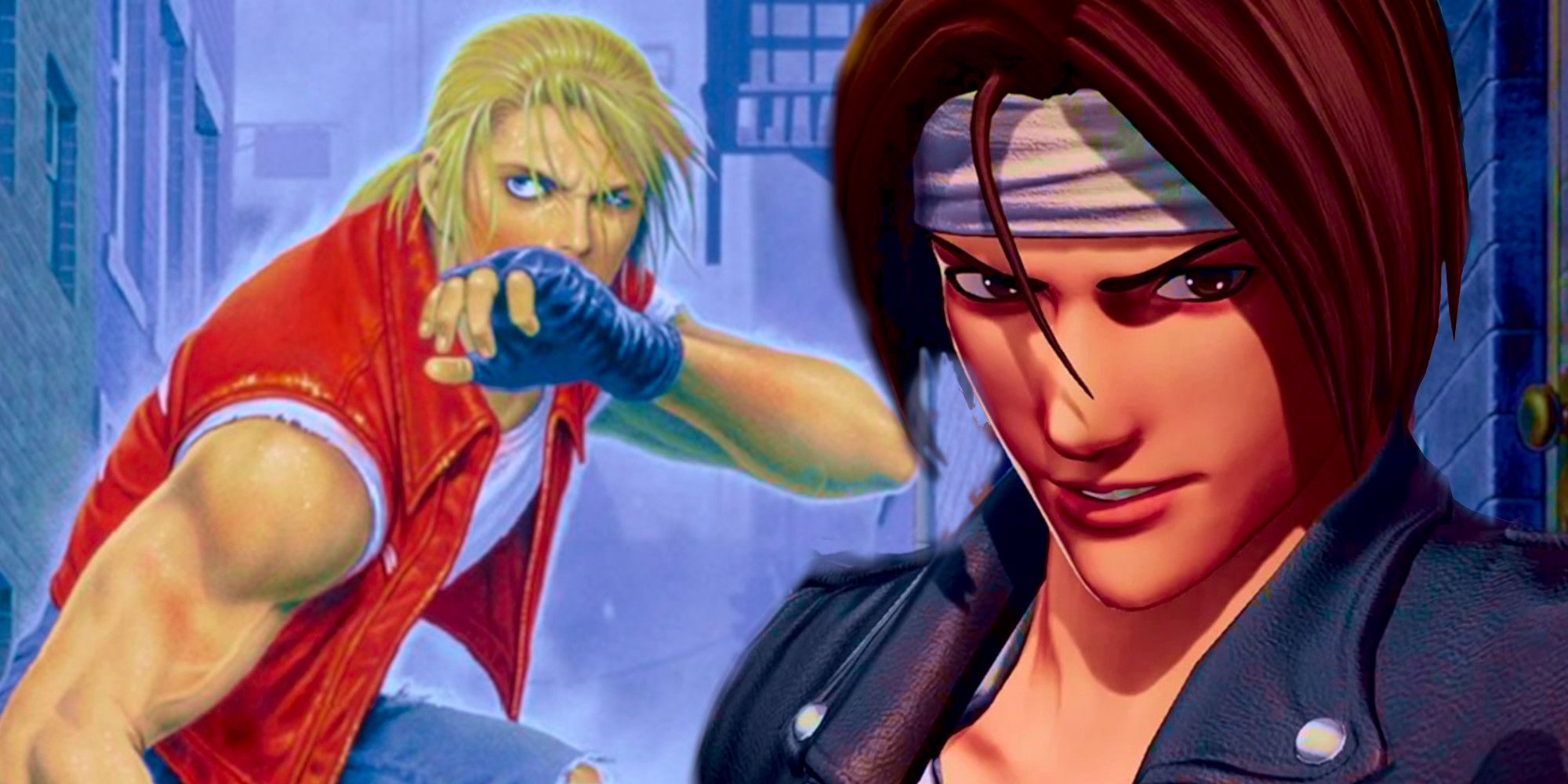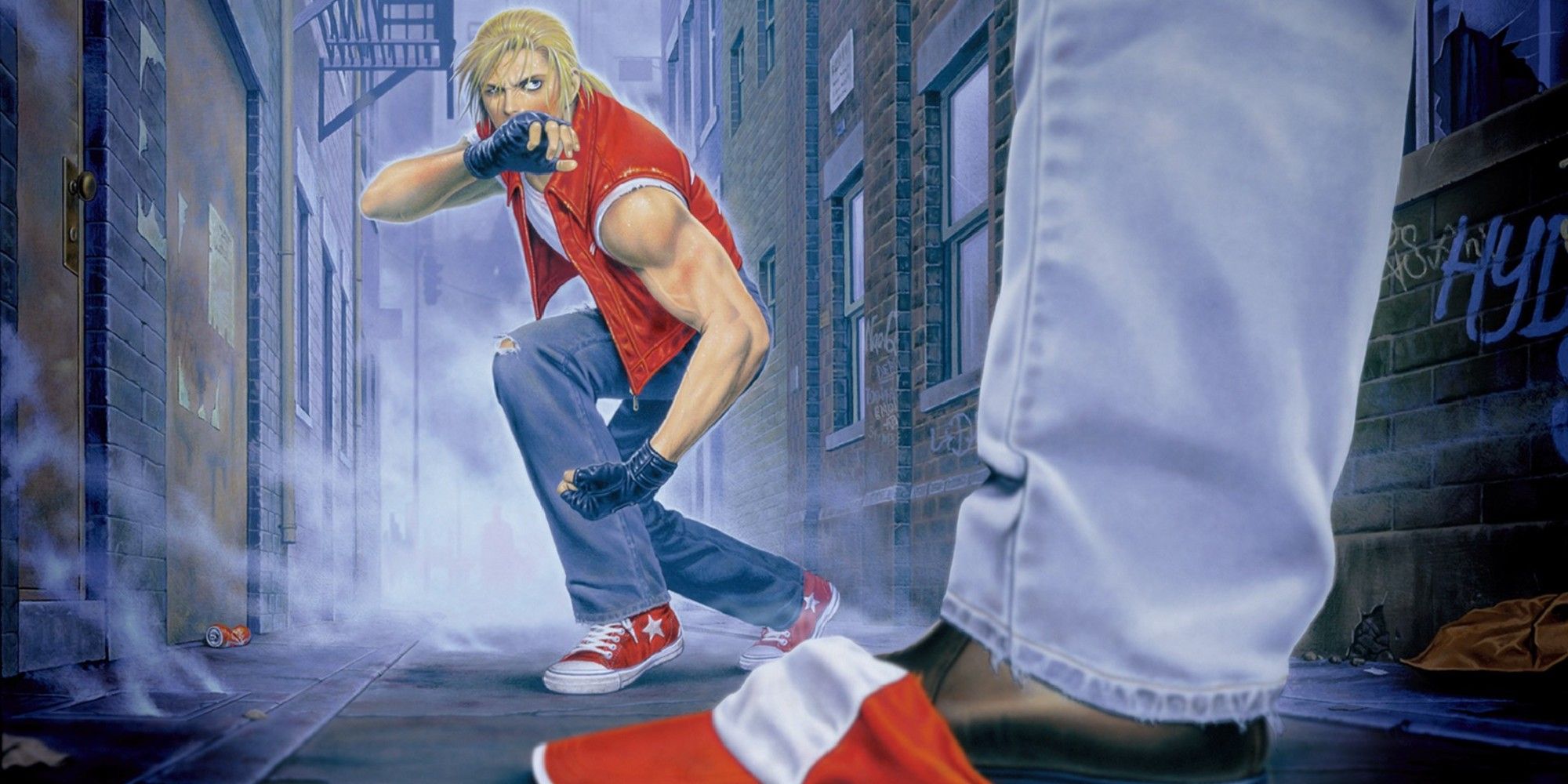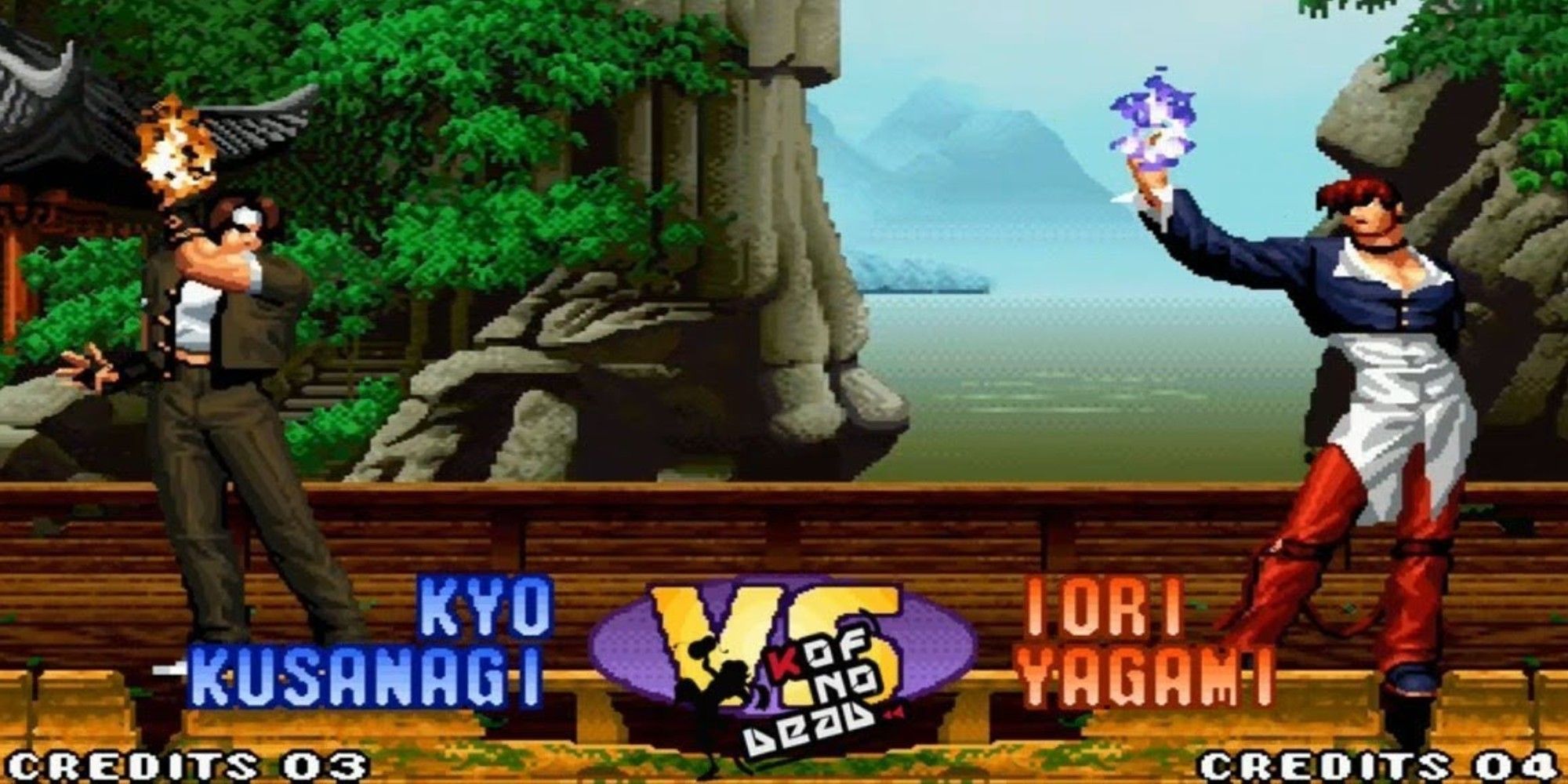
Street Fighter II revolutionized fighting games, but very few 2D fighters of the 1990s fully realized the graphical and technical extent of the genre. Street Fighter and other Capcom games were popular, accessible titles everyone knew, and Mortal Kombat wowed and shocked audiences with its gleeful bloody violence. Meanwhile, SNK experimented with the classic fighting game formula with Neo Geo arcade hits, Fatal Fury and Art of Fighting, which eventually formed the long-running King of Fighters franchise.
The name "king of fighters" came from the fictional martial arts tournament held in Fatal Fury: The King of Fighters, created by former Street Fighter director Takashi Nishiyama, who wanted to make a spiritual successor to Capcom's original hit fighting game. The plot revolved around Southtown crime boss and martial arts master Geese Howard holding the titular tournament. Heroes Terry Bogard, his brother Andy and their friend Joe Higashi all vow to defeat Geese in revenge.

The original Fatal Fury was important in that it not only showcased the graphical and technical power of the Neo Geo arcade cabinet at the time, but also introduced iconic mainstays like Terry Bogard, as well as demonstrated the developers' willingness to experiment with the formula.
Unique to the Fatal Fury series was the implementation of a two-lane "row" system, where players could move between different planes of the stage to avoid their opponent's attacks or catch them by surprise. Another much-touted feature was an early tag-team function, where a second player could join not to fight the first player, but to assist them against a CPU opponent. In spite of these novelties, Fatal Fury was not seen as distinct enough from its competitor, Street Fighter II.
SNK followed the success of the Fatal Fury series with Art of Fighting, a prequel to Fatal Fury following the adventures of students Ryo Sakazaki and Robert Garcia. Art of Fighting also introduced a "spirit gauge" meter that, when fully filled, allowed the player to launch a powerful special move -- two years before Super Street Fighter II Turbo implemented a meter. Art of Fighting 2 re-introduced Fatal Fury's Geese Howard as the main villain, beginning the crossover that eventually became King of Fighters.
The first King of Fighters released in 1994 and pioneered the 3-on-3 team battles that would become a massive staple in games like Marvel vs. Capcom and Dragon Ball FighterZ. The King of Fighters utilized many SNK characters from Fatal Fury, Art of Fighting, and titles like Ikari Warriors and Psycho Soldier, but the series also has its own original set of characters with unique storylines, often revolving around the rival characters Kyo Kusanagi and Iori Yagami.
The King of Fighters games received annual sequels, numbered by year of release, with perhaps the most well received title being KoF '98, which marked a turning point in the saga of Kyo and Iori's rivalry. This numbering continued until 2005 with the release of King of Fighters XI. By then, the original SNK had filed for bankruptcy. Now, the company is back with King of Fighters XIV, the first mainline entry to be entirely in 3D.

While always well-respected, King of Fighters and other SNK games have always struggled with marketing to international audiences. The franchise achieved massive popularity in Latin American countries and Southeast Asia, but the first game and its predecessors failed to beat Street Fighter in other Western markets, namely North America and Europe. SNK attempted to mitigate this and prevent its eventual bankruptcy through collaborations with rival company Capcom on Capcom vs. SNK.
After several painful hurdles and shake-ups throughout the company's history, SNK is finally regaining a semblance of its former arcade glory with several new releases involving famous characters. These include a reboot of Samurai Shodown, the return of King of Fighters, the quirky spin-off SNK Heroines and several mobile games. As a sign of SNK's resurgence, King of Fighters XV has recently been announced for a 2021 release, proof that the storied fighting game franchise still has enough steam to keep going.
0 Comments